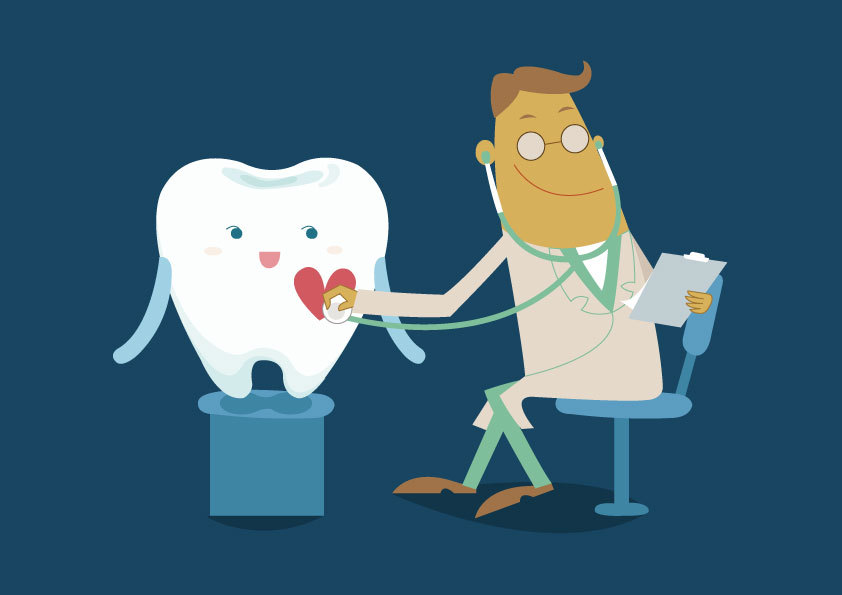Whenever you visit your dentist she most likely reminds you to brush in between meals and floss every day to help prevent tooth decay and gum disease. But some of the best prevention comes in the form of foods you eat and DON’T eat.
Here are some foods you should incorporate into your diet and also ones to avoid for oral health:
What You SHOULD Eat
Calcium and Vitamin D
Did you ignore your mother all those years ago when she told you drinking milk built strong teeth and bones? If so, you really should have listened to her. Calcium and vitamin D are critical to our tooth health at every age.
When our diets are low in calcium, the body leeches this important mineral from our bones and teeth. The jawbone in particular is susceptible to the effects of low calcium intake and can easily weaken leaving our teeth loose.
Calcium’s not just good for our teeth but also for our gums. Studies have shown that people who have a calcium intake that is less than the recommended daily allowance are almost twice as likely to have gum disease.
It’s just as important to get enough calcium and vitamin D into our diets at 40 as it was at 4. Without vitamin D, your body cannot absorb the calcium you eat, so be sure you’re getting enough of both.
Dairy products like milk, cheese and yogurt are obviously excellent sources of calcium, but there are other food sources as well. Dark leafy greens like spinach, kale and collards are also excellent sources, as are soybeans.
As for vitamin D, start eating more fatty fish like tuna, mackerel and salmon, egg yolks and beef liver. Of course, a lot of dairy is also fortified with vitamin D.
Vitamin C
You know that vitamin C is important because it boosts your immune system, allowing you to fight off illness easier. But vitamin C is necessary to build and repair connective tissue as well, so it’s no surprise that a study conducted at the State University at Buffalo found that those who eat less than the recommended amount of vitamin C are far more likely to develop gingivitis, a mild form of gum disease where gums become red and inflamed and bleed during brushing.
Making sure you get enough vitamin C every day is as easy as eating 1 piece of citrus fruit like oranges, grapefruits, and tangerines. Other foods high in vitamin C are bell peppers, broccoli, dark leafy greens, berries and tomatoes.
Crunchy Fruits and Vegetables
Besides being loaded with beneficial vitamins and minerals, eating crunchy fruits and veggies help your mouth in other ways. Chomping down on celery, apples, pears and carrots helps your teeth by acting as a sort of detergent that wipes away the bacteria that causes plaque. And, since these foods require a lot of chewing, your saliva production increases which also neutralizes the bacteria in your mouth.
Black Tea
We’re often advised to stay away from black tea because it stains our teeth, but it turns out it may also benefit our mouths as well. Studies conducted at the University of Illinois College of Dentistry have found that specific compounds in black tea have the ability to destroy – or at the very least suppress – the growth of dental plaque and cavity-causing bacteria. So it looks like one Mr. Earl Gray can prevent cavities and gum disease.
H20
Drinking plenty of water maintains oral health because it helps rinse away both bacteria as well as the remnants of food that bacteria turns into plaque.
What You SHOULDN’T Eat
Sugar
Sugar is just plain bad for us, period, and it’s particularly bad for our oral health. Sugar causes the bacteria in your mouth to go into a feeding frenzy, which produces harmful acids that lead to tooth decay. Candy and sugary drinks like sodas and venti Frappuccinos are your mouth’s worst enemy. Sodas are extremely bad for oral health because they not only contain a high amount of sugar but also destructive acid.
Sticky Foods
Most sticky food tends to be sugary food, like toffee and caramel, and as we just discussed, you should definitely try to eliminate these from your diet. But there are other sticky foods that may sound harmless, or even healthy, that you should also avoid. Dried fruit is actually very high in sugar because all of the water content has been removed and sugar is what is left.
If there are sticky foods you want to eat once in a while, try eating them with your main meal, not as a snack, so you can benefit from the extra saliva.
Acidic Foods
As we already mentioned, acid in the mouth eats away at the tooth enamel and eventually causes tooth decay. While you may know that soda has acid, and that eating sugary foods can produce acid, some acidic foods may surprise you.
Even healthy foods like citrus fruits and tomatoes, which provide beneficial vitamin C, are acidic. Pickles and red wine are also acidic. Even foods like some breakfast cereals and breads can be acidic.
Now, we would never tell you to avoid tomatoes or pickles or bread, but what we would say is – everything in moderation – and be sure to brush after every meal. If brushing is not possible for whatever reason, chew a piece of sugarless gum and rinse your mouth with water to neutralize this acid.
None of us have to age like our parents or grandparents. We can and should easily keep our own teeth for our entire lives. But in order to do this we’ve got to take great care of our mouths and watch what we eat. Take a bite out of that!
 Validating...
Validating... 





Leave a Reply